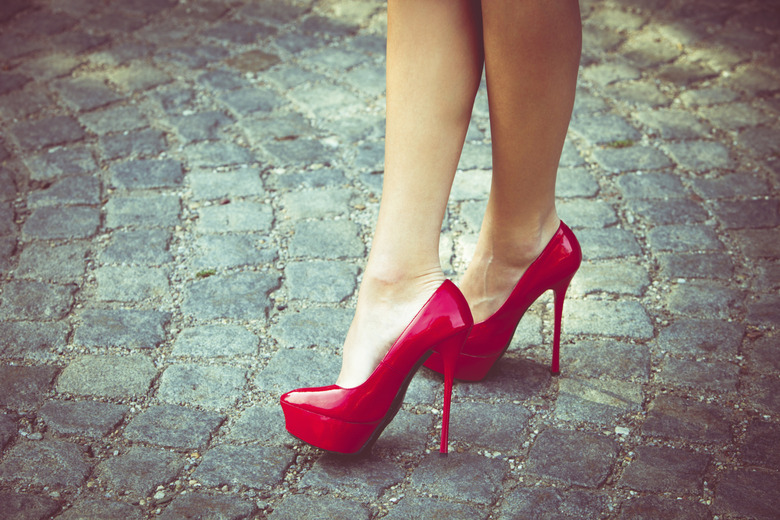How To Calculate Pounds Per Square Foot
A question often posed in introductory physics is: Which would preferable, to be stepped on by an elephant or by a young girl in high heel shoes? To answer the question, calculate pressure, the amount of force applied over a given area. Even relatively small forces, such as the weight of a young girl, can exert tremendous pressure when applied to a small area, such as the area impacted by stiletto heels. Similarly, distributing significant weight over a large area reduces pressure and its realized effects.
1. Measure the Weight
Measure the amount of force applied by the object. Commonly, gravitational acceleration accounts for download forces, given as weight in units of pounds. However, weight is often incorrectly stated in kilograms which measure mass. To convert kilograms to pounds, multiply by 2.2. For example, a 25 kg girl weighs 55 lbs (25 kg x2.2 lbs/kg) and a 2,700 kg elephant weighs 5,940 lbs.
2. Measure the Contact Area
Measure the contact area where the force is being applied. For a round area, square the radius and multiply by pi. As an example, if the elephant's foot measures 1 foot in diameter, divide by 2 to calculate the radius of 0.5. Square 0.5 and then multiply the result by 3.14 (pi) to get an area of 0.79 square feet. Because the elephant has four feet, however, multiple by 4 to calculate the total area of 3.14 square feet. If the little girl is rocking back onto the square, quarter-inch stiletto heels, multiply 0.25 times 0.25 to calculate an area of 0.063 square inches. Because the girl has two feet, multiply by 2 to get a total area of 0.13 square inches.
3. Calculate the Area
Divide by 144 to convert square inches to square feet. In the example, divide the stiletto heels' 0.13 square inches by 144 to calculate 0.0009 square feet.
4. Calculate the Pressure
Divide force by area to calculate the pressure exerted. Continuing with the example, divide the elephant's 5,940 lbs by 3.14 square feet to calculate the pressure of 1,891 pounds per square foot. Divide the little girl's 55 lbs by 0.0009 to calculate her pressure of 61,111 pounds per square foot. Therefore, the girl's heels exert considerably more pressure — so opt for the elephant trampling.
TL;DR (Too Long; Didn't Read)
If the elephant's weight is evenly distributed among all four feet, it doesn't matter if he's stepping with one foot or all feet; the force per area remains the same. However, if an acrobatic elephant balances all his weight on one foot, the pressure quadruples, because the weight is no longer distributed across four feet.
Forces are often presented in units of newtons. To convert to pounds, multiply by 0.23.
Pressure is often presented in units of atmospheres or pascals. To convert atmospheres to pounds per square foot, multiply by 2,116. To convert pascals to pounds per square foot, multiply by 0.021.
References
Cite This Article
MLA
Taylor, C.. "How To Calculate Pounds Per Square Foot" sciencing.com, https://www.sciencing.com/calculate-pounds-per-square-foot-5630769/. 23 May 2018.
APA
Taylor, C.. (2018, May 23). How To Calculate Pounds Per Square Foot. sciencing.com. Retrieved from https://www.sciencing.com/calculate-pounds-per-square-foot-5630769/
Chicago
Taylor, C.. How To Calculate Pounds Per Square Foot last modified March 24, 2022. https://www.sciencing.com/calculate-pounds-per-square-foot-5630769/
